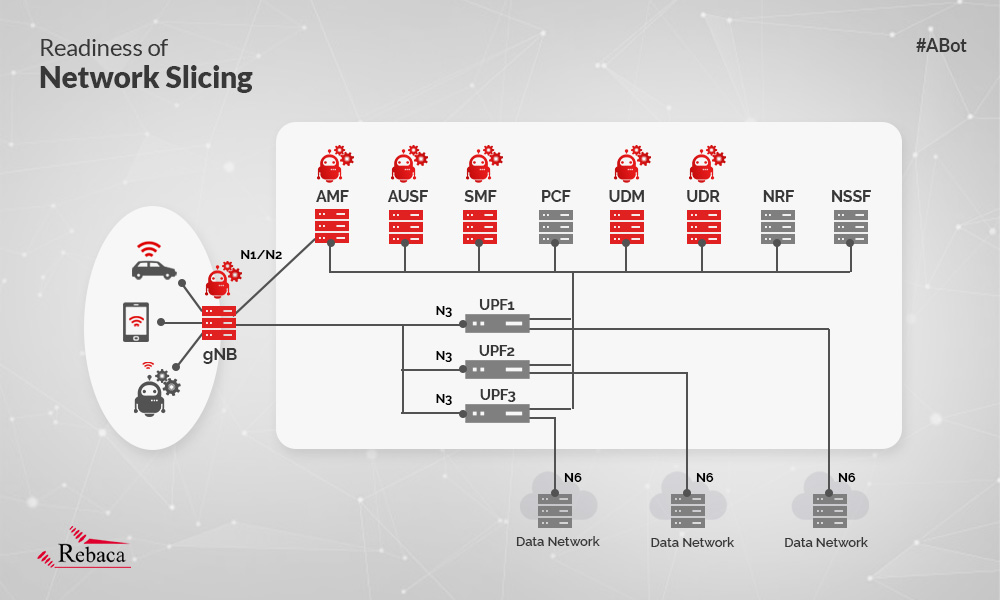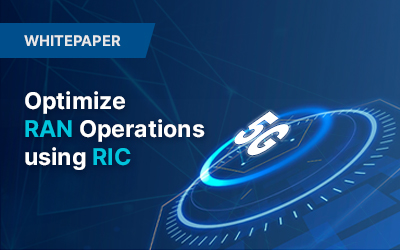The need for customised services for different groups of users of the cellular network necessitates Network Slicing. Network Slicing creates virtualized and independent logical networks on top of shared physical infrastructure. It allows operators to provide dedicated logical networks for different applications. Each network slice is then allocated to an application-specific 5G usecase.
Parameters like the speed of data, quality of service, latency (or turnaround time), reliability and security are some of the basis of customization of a network slice. They are governed by SLA between the network operator and the enterprise customer. For example, in a smart city network, the network slice needs to send smaller data packets to a large number of devices in order to support smart meters, smart grids, smart street lights, etc. Whereas in a network slice supporting remote medical services or emergency video surveillance, low latency and high reliability are essential. For precise Industry 4.0 applications also, network slice should maintain 100% reliability and extremely low latency. Then again, for autonomous driving and most V2X application, the network slice should be highly reliable and ensure low latency.
Network slices are broadly categorized into slices for three generic services: enhanced mobile broadband (eMBB), massive machine-type communications (mMTCs), and ultra-reliable low-latency communications (URLLCs). While a slice specific to eMBB focuses on high throughput, the one for mMTC focuses on the number of devices it can support and the slice for URLLC focuses on high reliability and millisecond latency. Thus each slice should be configured and managed differently to meet the parameters as per the SLA.

Based on the Network Slice Selection Assistance Information (NSSAI) sent by the 5G UEs, selection of RAN and core network components of a slice are made. The NSSAI include the Slice Service Type (SST) and Slice Differentiator (SD). A single device can select components of multiple slices, as well. Slice allocation and selection can also be done based on the capabilities of the devices trying to connect to a network, the subscription information available and the policies set by the operator. The Network Slice Selection Function (NSSF) of 5G SBA Core is in charge of selecting 5G core Network Slice instances. Different PDU sessions (a connection between a device and packet data network) may be allocated for different slices.
Network Function Virtualization (NFV)enables disassociation of the network function implementation from the hardware resources. A NFV infrastructure helps deployment of Virtual Network Functions (VNFs) and contributes to network flexibility. A virtually deployed network function allows dynamic deployment and scaling of network capability based on service requirements on top of the same hardware resources. Thus network slicing implemented on NFV allows optimum usage of network resources if the slices are formed with VNFs.
For creating and managing different network slices, selecting components of slices dynamically, allocating services to each slice and ensuring whether the slice meets the required parameters, 5G VNFs should be validated under different slice specific end-to-end test scenarios and load conditions. The test tool to validate these VNFs needs to be cloud-native so that it can work on a NFV infrastructure. This cloud-native test tool needs can generate traffic specific to the application that the network slice is serving for pre-deployment validation of VNFs. The test tool should also verify whether a network slice runs in isolation without impacting services served by other slices. Network slicing interoperability should be tested among the VNFs, which is critical for forming a slice. Dynamic scalability of VNFs can also be tested using a test tool which itself can scale and streamline the load in a balanced manner. A thorough validation of the network configuration is essential to reap the benefits of network slicing and efficiently addressing customer-specific applications in an agile environment reducing CAPEX and OPEX.





